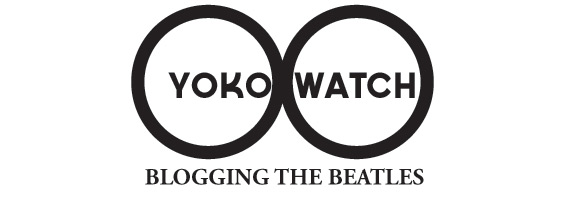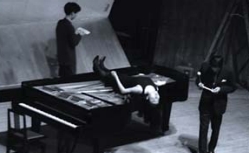Where’s Yoko? On John Cage’s Piano Edition

Brow Beat is following the Beatles in “real time,” 50 years later, from their first chart-topper to their final rooftop concert. This week we introduce Yoko Watch, a new feature in which every once in a while we check in with Yoko Ono and see what she was up to 50 years ago, years before coming into contact with The Beatles.
50 years ago, Yoko Ono had never met John Lennon or any of the other Beatles, but she had already made a name of her own. Born in 1933 and raised by a prosperous family of bankers, Ono was a fiercely independent woman who excelled in school. After becoming the first female philosophy student ever accepted into a prominent Tokyo school, Ono moved with her family to New York state in 1952. There she attended Sarah Lawrence College, but soon she met avant-garde composer Toshi Ichiyanagi and in 1955 she dropped out. By 1956 she had married Ichiyanagi and moved to New York City.
As author Tim Riley wrote in his biography of Lennon, Ono’s dual Buddhist and Christian backgrounds (not to mention her intelligence, education, and rebellious spirit) helped her fit right in among John Cage and the other avant-garde artists and composers of 1950s New York City, many of whom were influenced by Zen Buddhist principles. Soon Ono was invited to join the anti-art conceptual artists of the Fluxus group, who threw “happenings” that emphasized the here and now. So it was that in fall 1962, after her successful exhibition at Tokyo’s Sogetsu Art Center, her husband invited her back to perform with composers John Cage and David Tudor.
Ono’s pre-Lennon performances are not widely available, but, as Seth Colter Walls noted in Slate last September, her 1962 performance with Cage was recently released as part of a three-disc set chronicling Cage’s tour through Japan. On the second disc you can hear Ono’s vocals in “26’55.988,” the second track listed below, a piece with two pianists and a string player:
Walls praised Ono’s contribution to the performance:
Ono is not around merely to add to an already-in-progress sonic onslaught. Rather, she earns her place in the proceedings by offering vocal lines that pirouette between postures of sensuality and aggression, depending on what else she’s hearing in the piece. At points, there are also hints of Ono’s early-in-life classical vocal training, most traces of which she would later gleefully discard as a solo artist.
However, Ono began to feel conflicted about her role in the experimental scene. As Riley writes, “her dual persona, as successful artist versus wifely appendage of a pianist, further strained her marriage and led her into a debilitating depression.” After she attempted suicide, she was institutionalized for months, before another artist, the film producer and jazz musician Anthony Cox (a fan of Ono’s) sought her out. After being released with Cox’s help, she married Cox in June 1963. Months later she gave birth to her first child, Kyoko.
Previously in Blogging the Beatles
How a Black Label Brought the Beatles to America
The Beatles Say Goodbye to Hamburg
The Beatles Hit the Airwaves
The Beatles Rise Up the Charts
The Beatles Record Their First No. 1

